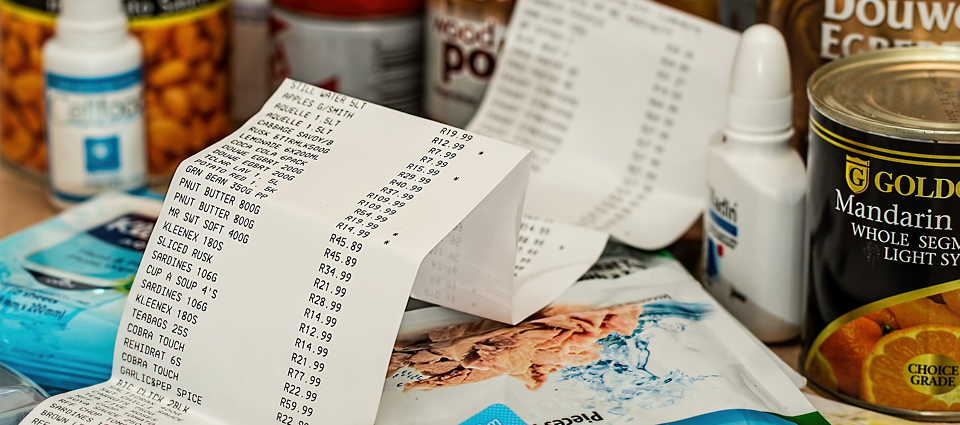The Grocery Shopping Landscape in 2018
August 13, 2018Consumer grocery shopping habits keep shifting from year to year. Which categories are consumers spending? Is ecommerce overtaking in-store grocery sales?
Nielsen’s recent Total Consumer Report takes a deep dive in how American consumers are spending in the Fast Moving Consumer Goods (FMCG) market. We will highlight key findings about category sales, prepared foods, health and wellness and ecommerce in this article.
Overview
There was 3% market growth from July 1, 2017 to July 1, 2018 in the FMCG category. Ecommerce, fresh and perishables sales are the primary drivers of the growth, Nielsen reports.
Fresh and perishable foods alone generated $177.9 billion in the latest sales year. Fresh categories account for about 49% of all dollar growth in the most recent sales year.
In the past year, the average shopper’s basket size increased in unit volume but declined in dollar value, meaning consumers spent less money buying more food. This situation reversed from 2017 to 2018.
The average conventional grocery shopper made 59 trips in the last year, which is a 1.8% decrease in shopping trip frequency from the previous year. That’s an average of just over 1 trip per week to a conventional grocery store.
The average shopper spent an average of $33 per trip, which is 0.9% more than the previous year.
Key Takeaway: Shoppers are spending more money on fewer items. Consumers are buying fresh and perishables food and using ecommerce channels to buy groceries with increasing frequency.
Category: Center Store and Perimeter
“Shoppers don’t shop departments. They shop needs,” Nielsen wrote in its report.
Center store categories (grocery, frozen and dairy) saw $2.9 billion overall in dollar growth in the past year. Shoppers spent almost twice as much in center store categories as they did in perimeter categories. Here’s the category breakdown in terms of both sales and growth for the $344 billion in center of store sales in the past year:
- Frozen $51.2 billion & 1.8% growth
- Grocery $227 billion & 0.8% growth
- Dairy $66.2 billion & 0.5% growth
Perimeter sales (deli, meat, seafood, bakery and produce) were no slouch, either. The deli and meat departments in particular showed strong growth. Here’s the category breakdown in terms of both sales and growth for the $178 billion in perimeter sales in the past year:
- Deli $32.7 billion & 2.8% growth
- Meat $66.8 billion & 1.5% growth
- Seafood $5.1 billion & 1.5% growth
- Bakery $12.9 billion & 1.2% growth
- Produce $60.4 billion & 0.3% growth
Key Takeaway: The frozen, deli, meat and seafood departments saw the most growth in the past year. The deli department had the highest growth of all the categories.
Prepared Foods
Prepared foods across all categories generated $62.6 billion in sales last year. Prepared foods includes heat-and-eat, ready-to-eat and packaged meals.
Prepared foods in the frozen department account for the most sales, followed by the deli and grocery departments.
Shoppers are showing clear preferences for certain prepared foods. The top 10 trending prepared foods from the past year are:
- Ready-to-eat-stew 78.3% unit growth
- Burgers 39.5% unit growth
- Meal kits 26% unit growth
- Main course: pork 18.7% unit growth
- Breakfast meals/combos 17.9% unit growth
- Main course: chicken 16.6% unit growth
- Ready-to-eat soup 13.2% unit growth
- Chicken salad sandwiches 13.1% unit growth
- Tacos 11.4% unit growth
- Meatballs 9.1% unit growth
Just carrying the label “prepared food” isn’t enough. The top 10 types of prepared foods that saw negative growth in the past year are:
- Pork sandwiches -24.1% unit growth
- Bean salad -14.7% unit growth
- Tuna salad sandwiches -14.4% unit growth
- Egg salad -13.2% unit growth
- Value-added rice -11.7% unit growth
- Cocktail sausage appetizers -10.9% unit growth
- Fruit salad -9.7% unit growth
- Sausage-prepared sandwiches -9.1% unit growth
- Cold cut sandwiches -7.5% unit growth
- Tuna salad -5.8% unit growth
Sales in the prepared food subcategory heat-and-eat were down about $10 million overall in the past year, but there was growth in pasta sales. Here’s the category breakdown in terms of both sales and growth for heat-and-eat pasta sales in the past year:
- Grocery $105.9 million & 12.4% growth
- Deli prepared $70.2 million & 12.6% growth
- Frozen $60.6 million & -14.7% growth
Key Takeaway: Shoppers like buying prepared foods, especially ready-to-eat stew and heat-and-eat pastas.
Health, Wellness and Produce
Health and wellness claims are moving products, but an organic label may not cut it anymore. Here’s the breakdown in terms of both sales and growth for fastest-growing health and wellness claims in the past year:
- Grain free $974 million & 48% growth
- Calorie claim $1.28 billion & 31.3% growth
- Cruelty free $ 1.04 billion & 29.2% growth
- Corn free $1.61 billion & 22.6% growth
- Grass fed $888 million & 20.7% growth
Produce trends in the past year are the exact opposite of overall FMCG trends. Shoppers spent more money on fewer produce items. There was $60.4 billion in produce sales, which is 0.3% growth from the previous years. Volume consumption contacted about 3% in the past year.
However, people are still buying produce. The top 5 produce items sold in the past year and their total sales are:
- Limes $63.3 million
- Cherries $60 million
- Mandarins $53.2 million
- Avocados $48 million
- Prepackaged salads $29.8 million
Sales did decrease for some produce. Here are the 5 produce items with the biggest sales decreases in the last year:
- Apples -$231.6 million
- Oranges - $120.3 million
- Tomatoes -$114.7 million
- Bananas -$99.3 million
- Watermelon -$85.1 million
Key Takeaway: Shoppers are concerned about grain and calorie intake but are overall less interested in buying fruit and vegetables.
Ecommerce
Today, 1 in 3 Americans buy groceries online. In less than 10 years, 7 in 10 shoppers are expected to buy their groceries online.
The average shopper made 6 online purchases in the past year and spent an average of $41 per online “shopping trip.” Both the frequency and dollar spend per online “trip” increased from the previous year.
However, not a single category generated higher sales than in-store. In other words, people are still spending more money on groceries in brick and mortar stores than online grocery purchases.
Here’s the breakdown in sales for food categories online compared to in-store sales:
- Soft drinks $363 million online vs. $1,116 million in-store
- Salty snacks $207 million online vs. $932 million in-store
- Wholesome snacks $149 million online vs. $201 million in-store
- Candy $141 million online vs.$1,738 million in-store
- Nuts $61 million online vs. $170 million in-store
- Crackers $45 million online vs. $74 million in-store
- Cookies $41 million online vs. $27 million in-store
- Gum $16 million online vs. $64 million in-store
Shoppers are showing growing interest in subscription services. The percentage of online category purchased based on subscription in the past year are:
- Nuts 16%
- Coffee pods 16%
- Granola bars 13%
- Energy drinks 13%
- Drink mixes 12%
- Crackers 11%
- Chips 10%
- Cookies 9%
- Juices and mixes 8%
- Candy 7%
Key Takeaway: Ecommerce is gaining in popularity, but slowly. Most shoppers still go to a brick and mortar store for their regular grocery shopping.

